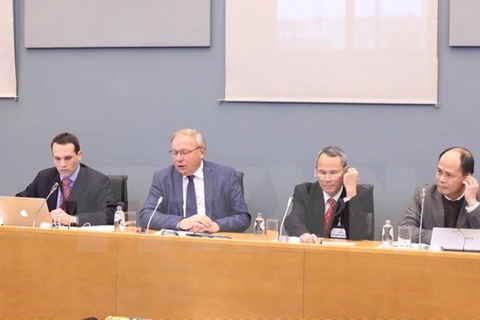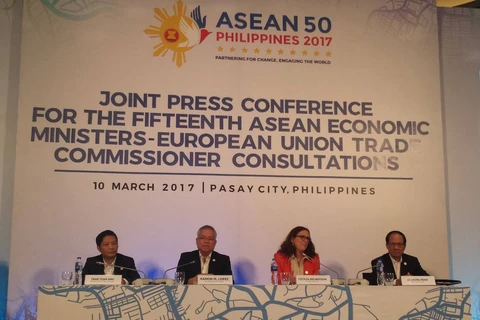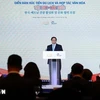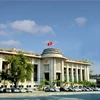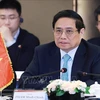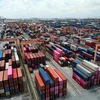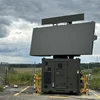Hanoi (VNA) – Vietnam’s involvement in 12 bilateral and multilateral free trade agreements (FTAs) with 56 economies around the world is expected to be a golden key for the country to expand its global economic integration, according to Cong Thuong (Industry & Trade) newspaper.
In July 1995, Vietnam signed international treaties to join the Association of Southeast Asian Nations (ASEAN) and officially partook in the ASEAN Free Trade Area (AFTA) in January 1996.
Since then, the country has engaged in free trade deals such as ASEAN-China Free Trade Agreement – signed in 2002 and ASEAN-Korea Free Trade Agreement – inked in 2006; and joined the ASEAN-Japan Free Trade Area.
In October 2011, Vietnam struck a free trade agreement with Chile, and from mid-2012 onward, the Southeast Asian country has pushed ahead with negotiations on other free trade packs.
In late 2014, Vietnam concluded negotiations on bilateral and multilateral free trade agreements with the European Union, the Republic of Korea, and the Customs Union of Russia, Belarus and Kazakhstan.
Vietnam has been negotiating more free trade agreements, including the Regional Comprehensive Economic Partnership (RCEP), and deals between ASEAN and Hong Kong, and between Vietnam and Israel.
The RCEP is considered a free trade agreement which will stipulate trade activities of the entire ASEAN.
The Vietnam-EU Free Trade Agreement will enable Vietnam to boost relations with Central and Eastern European countries, while accessing advanced technologies and learning how to improve management skills and vocational training.
Tax reductions under the pact will increase Vietnam’s exports to the EU to about 30-40 percent.
Meanwhile, the free trade agreement between Vietnam and the Eurasian Economic Union (EAEU), which came into force in October 2016, has opened up opportunities for businesses of the two sides to boost trade and services.
Vietnamese firms will have access to a market with total gross domestic product of nearly 2.2 billion USD and a population of 183 million. Vice versa, countries from the EAEU will be able to access a 90 million population in Vietnam.
The Vietnam-RoK Free Trade Agreement, which has been in effect for one year, has boosted Vietnam’s economy and is expected to help increase the bilateral trade to 70 billion USD by 2020.
Besides opportunities, there are numerous challenges, including stricter technical requirements from foreign nations on Vietnam’s export products, which cause trade barriers.
Additionally, the competitive edge of Vietnamese firms is still poorer than trade partners in the region such as Singapore, Malaysia and Indonesia.
It is also difficult for Vietnam to control imported goods due to tariff removals. Domestic consumers can buy products and use services from other countries, making it tough for Vietnam to protect production at home.
Vietnam plans to devise measures such as refining trade and investment policies, attracting high-quality foreign investment projects, and adjusting the structure of domestic and import-export market to optimise opportunities from FTAs.
By 2020, when all 16 FTAs that Vietnam is involved in come into effect, Vietnam will be among a massive economic network of 59 partners, including five permanent member countries of the UN Security Council, 15 out of the 20 nations from the G20 and other emerging economies.-VNA

